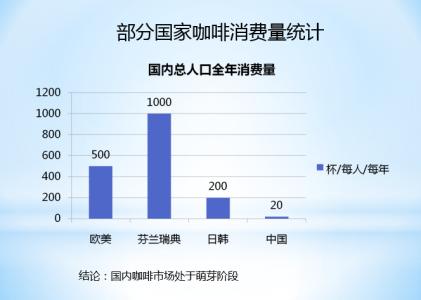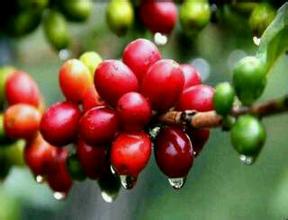Description of Taste and Flavor of Tanzanian Coffee beans introduction of varieties produced by grinding scale
Description of Taste and Flavor of Tanzanian Coffee beans introduction of varieties produced by grinding scale
Coffee is the main cash crop in Angola, the primary export of Burundi and the largest foreign exchange earning industry in Kenya in the past. Ethiopia is known as the "hometown of coffee". The coffee production of C ô te d'Ivoire occupies an important position in the world, while Uganda is famous for its production per unit area in Africa. The delicate floral and sweet fruit aromas that a cup of water can bring out of Yirgacheffe are unparalleled, or sun-treated Sidamo, sweet and atmospheric, is the most classic top representative of Ethiopian coffee.
Ethiopia is the birthplace of the famous Arabica coffee beans. It is said that coffee was first discovered by shepherds in Essekafa, and the name of coffee evolved from Caffa. It is well-known as the "hometown of coffee".
The geographical environment of Ethiopia is very suitable for coffee growth. Currently, about 25% of the Ethiopian population depends directly or indirectly on coffee production for a living. Since most local farmers still care for coffee trees manually and do not use harmful pesticides and herbicides, most of the coffee produced in Ethiopia is organic.
The coffee cups made in Songea are well-behaved, reflecting the common characteristics of "northern" coffee. However, the coffee produced by Kibo has lost this characteristic because of the loss of flavor during transportation. Songea tastes clear and unrestrained, although it is still slightly more relaxed and mild than Kenyan coffee. This season, Nkoanekoli and Ngorongoro have also joined the ranks of coffee cultivation, which represents the development of coffee cultivation in other regions. However, there is a place where the coffee is stale and tasteless, with no performance in the cup. We have tested some garden beans, and they all have obvious "transportation problems", that is, the flavor of coffee beans has been lost in the course of transportation. But the problem is that although Tanzania is aware of the problem and has paid extra for it, the quality of coffee beans has not improved. So what can we do to encourage people to make mistakes and try their best to prevent the quality defects of coffee beans caused by transportation, so that their flavor can be better reflected?
Coffee beans in Tanzania are of extraordinary quality. They are produced in the Mohi district near Mount Kilimanjaro. The mountains with a height of 3,000 to 6,000 feet are the most suitable areas for growing coffee. The fertile volcanic ash gives the coffee here a strong texture and soft acidity. It exudes delicate aromas and contains aromas of wine and fruit, making people taste endless aftertaste. After drinking Tanzanian coffee, I always feel a soft and mellow smell of soil around my mouth. Coffee gourmets often use words such as "wild" or "wild" to describe it.

Important Notice :
前街咖啡 FrontStreet Coffee has moved to new addredd:
FrontStreet Coffee Address: 315,Donghua East Road,GuangZhou
Tel:020 38364473
- Prev

Kenya Coffee handling-Starbucks Kenya Coffee Bean theme
Kenya Coffee treatment-Starbucks Kenya Coffee Bean theme Kenya is to the north of Ethiopia, the origin of Arabica coffee trees, but it was not until the beginning of the 20th century that coffee cultivation began. Missionaries introduced Arabica trees from the leaves in the 19th century, but did not plant them in large quantities. Coffee was not cultivated on a large scale until 1893, when Brazil's ancient "bourbon" coffee seeds were introduced.
- Next

Grading of coffee beans-Brazilian coffee bean treatment
Grading of coffee beans-Brazilian coffee bean treatment harvest year: 2012-the year is for roasters' reference, so the year is usually not marked on the label of roasted cooked coffee beans on the market. In the coffee beans sold in the market, in order to reduce the trouble and identification burden of consumers, they generally do not make such complicated labels. Different small producing areas, no
Related
- Detailed explanation of Jadeite planting Land in Panamanian Jadeite Manor introduction to the grading system of Jadeite competitive bidding, Red bid, Green bid and Rose Summer
- Story of Coffee planting in Brenka region of Costa Rica Stonehenge Manor anaerobic heavy honey treatment of flavor mouth
- What's on the barrel of Blue Mountain Coffee beans?
- Can American coffee also pull flowers? How to use hot American style to pull out a good-looking pattern?
- Can you make a cold extract with coffee beans? What is the right proportion for cold-extracted coffee formula?
- Indonesian PWN Gold Mandrine Coffee Origin Features Flavor How to Chong? Mandolin coffee is American.
- A brief introduction to the flavor characteristics of Brazilian yellow bourbon coffee beans
- What is the effect of different water quality on the flavor of cold-extracted coffee? What kind of water is best for brewing coffee?
- Why do you think of Rose Summer whenever you mention Panamanian coffee?
- Introduction to the characteristics of authentic blue mountain coffee bean producing areas? What is the CIB Coffee Authority in Jamaica?

